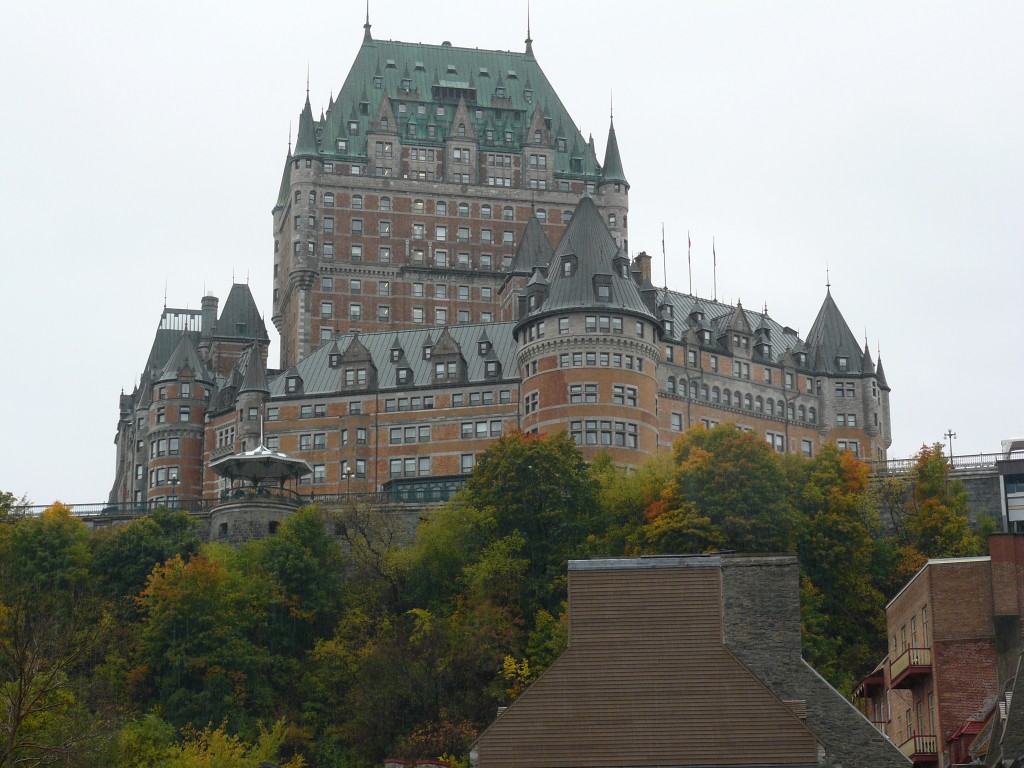Touring La Ville de Quebec
Last night we reached the final stop on our Via Rail tour of Eastern Canada: La Ville de Quebec. When we arrived in Toronto last Friday, we found a truly international city, even more so than New York, with more than 130 ethnic groups.
Our next stop, Ottawa, is the capital of a bilingual nation, but is itself mostly English with French subtitles. The next stop, Montreal, is a truly bilingual city, split just about down the middle. When you get to Quebec, there is no mistaking the fact that you’re in a French city in a French province. Again you have subtitles, but here they are in English.
This is a place I have always wanted to visit. I have seen photos of the Hotel Frontenac towering above the city and read about the Battle for Canada in which both generals, Wolfe and Montcalm, were mortally wounded. The English won the battle, and they governed the province for a century or so, but take my word for it, Quebec is still as French as French can be.
Last night we dined splendidly at Restaurant Le Pain Beni with Ms. Paule Bergeron of Quebec City Tourism and checked into the Hotel Chateau Laurier, where everything is exactement comme il faut.
We had breakfast with the hotel’s Marketing Manager, M. Steve De Champlain, at Restaurant Le Louis-Hebert, and then drove around the Plains of Abraham, where the Battle for Canada took place, with Ms. Sharon Frenette, also of Quebec City Tourism. The area is now known as Battlefield Park, and it is used for sports, concerts and festivals.
Sharon took us all over town, from the walled Upper City to the Old Port, and showed us where the American forces led by Benedict Arnold were driven back when they attempted to capture the city in 1775.
We had a superb lunch at the Hotel Frontenac with Assistant Director of Public Relations Ms. Catherine Lapierre, who gave us a tour of the hotel, and then Sharon took us to Montmorency Falls, where we rode the cable car to the top to take in the sweeping views of the St. Lawrence River, and to the idyllic, pastoral Ile d’Orleans, where we visited a ciderie and a vineyard that makes creme de cassis from black currants. It was just like touring the French countryside.
I think it’s great that this center of espirit Francaise is thriving here in North America because it keeps the continent from getting too homogeneous; and I honor Canada’s commitment to its status as a bilingual nation — though I’m sure it means a lot more paperwork — because it is emblematic of the respect that her citizens show for one another.


October 8, 2010 @ 1:36 am
Lovely picture Steve and then you say you would rather stay home!